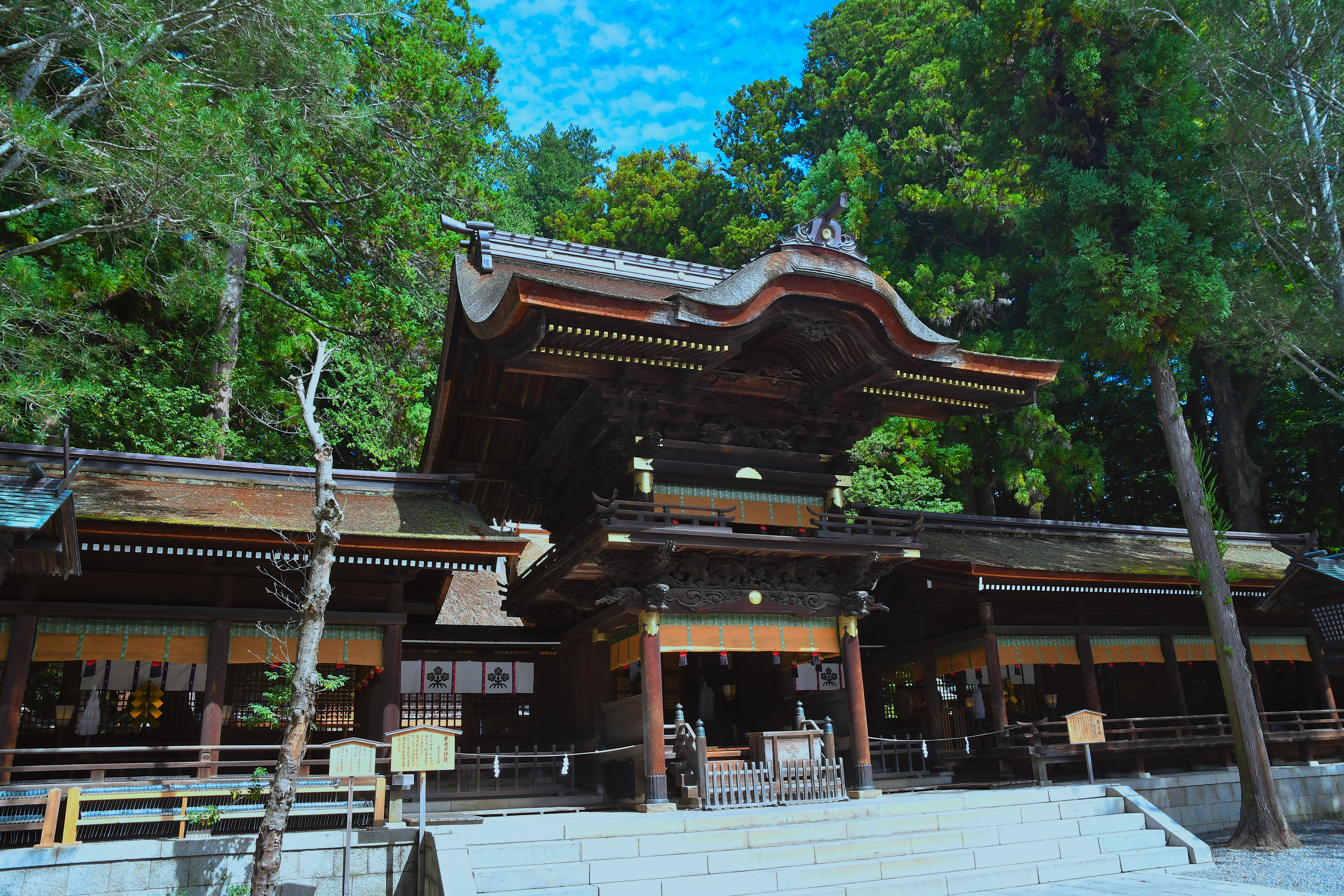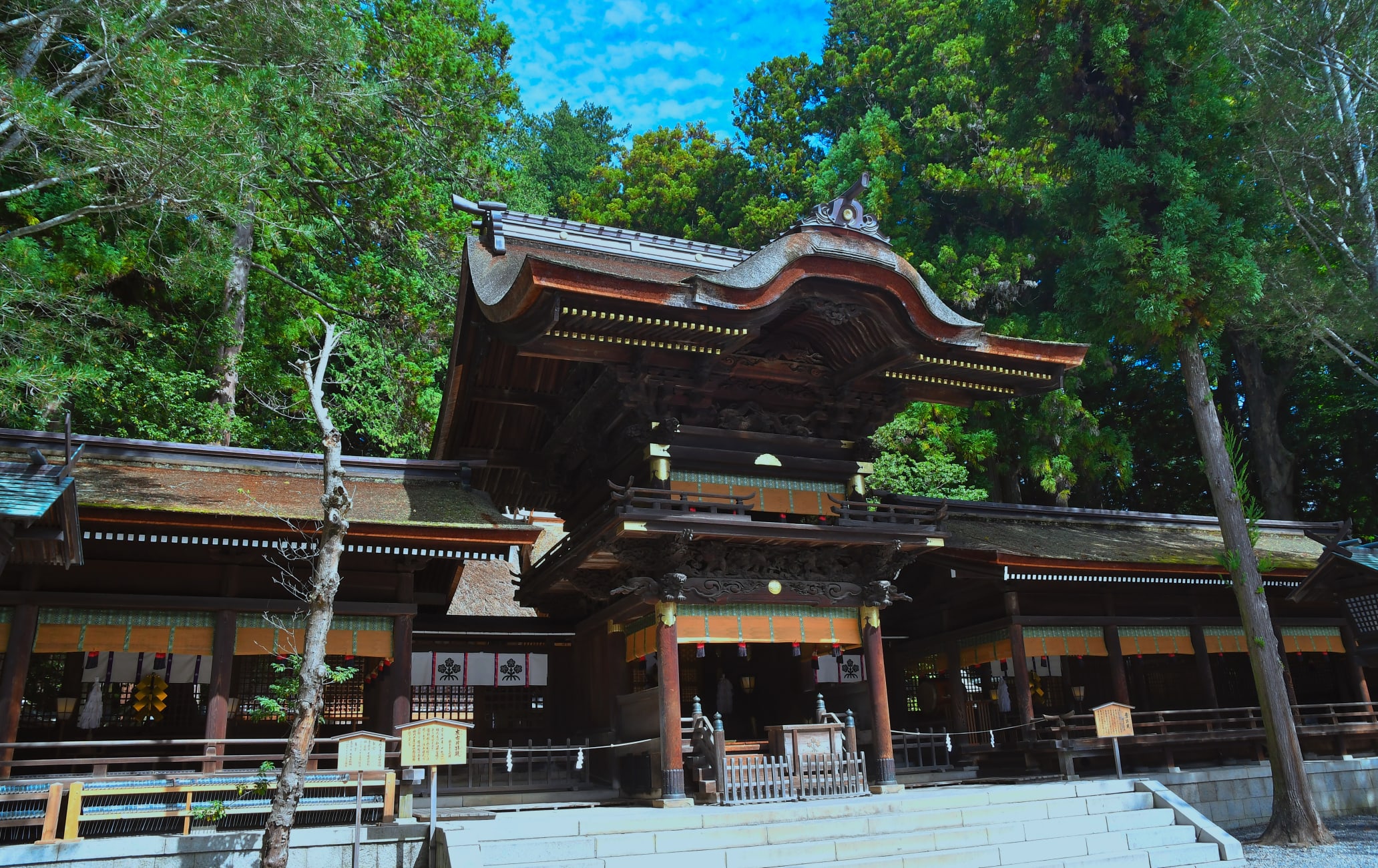Suwa Taisha Shrine is one of Japan's oldest shrines and is known for its unique festival that happens once every seventh year
Suwa Taisha Shrine consists of four shrine complexes. These include the Kamisha Honmiya and Kamisha Maemiya of the Kamisha (upper shrine group) located on the southern shore of Lake Suwa, and the Shimosha Akimiya and Shimosha Harumiya of the Shimosha (lower shrine group) on the northern shore of Lake Suwa. Its Onbashira Festival held only once every seventh year is renowned across Japan for its unique and dynamic events, making it popular with both locals and visitors from outside of the area.
Don't Miss
- Observe the posts at each shrine's four corners, carried from the mountains during Onbashira Festival
- Cleanse your hands before entering the grounds at the unusual chozuya that spouts hot spring water
- Visit the Manji no Sekibutsu stone Buddhist statue near Shimosha Harumiya that is revered for its spiritual power
How to Get There
Kamisha (upper shrine group) : From JR Kami-Suwa Station, the main Kamisha Honmiya is about 50 minutes by bus or 15 minutes by taxi. From Kamisha Honmiya it's about a 30-minute walk to Kamisha Maemiya, and a further 30-minute walk from Kamisha Maemiya to JR Chino Station.
Shimosha (lower shrine group): Shimosha Akimiya is a 10-minute walk from JR Shimo-Suwa Station, followed by a 15-minute walk from Shimosha Akimiya to Shimosha Harumiya. From Shimosha Harumiya it is 15-minute walk back to JR Shimo-Suwa Station.
If taking the Azusa Limited Express from Shinjuku Station in Tokyo, it's a two-hour ride to Chino Station. Two hours 15 minutes to Kami-Suwa Station, and two hours 20 minutes to Shimo-Suwa Station. A direct express bus service also operates from Shinjuku's express bus terminal.
Quick Facts
Travel between the Kamisha (upper shrine group) and Shimosha (lower shrine group) groups takes about 30 minutes by car
Suwa Taisha Shrine's Kamisha revere the mountain and the Shimosha worship the trees
Giant 200-year-old fir trees are cut down and then slid down the mountainside some 10-20 kilometers to the nearby village during the Onbashira Festival, held once every seven years
Touring the four shrines
According to the Kojiki, Japan's oldest existing compilation of history, traditions, and legends (created in 712), the origin of Suwa Taisha Shrine began during an event known as the kuni-yuzuri, where rulership over Japan was passed from the gods of the heaven to the gods of the land. One such god of the land, Takeminakata-no-kami, was defeated during a power struggle and fled to Suwa. There, they created the land of Shinano (now Nagano) and were enshrined as Suwa Myojin at Suwa Taisha Shrine.


There is no hierarchy between shrines, so it's fine to visit just one group or the other due to the distance that divides them. However, if you have the time or are traveling by car, then visiting all four shrines is recommended. Visitors who do so and collect their red ink stamps will receive a memento.
An ancient shrine with nature as its deity
While the Kamisha (upper shrine group) shrines sitting at the foot of Mt. Moriya reveres the mountain as its sacred body, the Shimosha (lower shrine group) shrines worship large trees — Shimosha Akimiya worships a large yew tree and Shimosha Harumiya a large cedar tree. This is a characteristic of shrines that lack a Honden, the most sacred building within a Shinto shrine complex, worshipping the surrounding nature instead.
Kamisha Maemiya (upper shrine group)
Kamisha Maemiya is considered the birthplace of the Suwa faith as it is where the deity (Suwa Myojin) first arrived. Suwa Myojin is widely worshipped as a guardian deity of agriculture, industry, victory, and military fortune.




Kamisha Honmiya (upper shrine group)
A great number of historic structures remain on the precincts of the Kamisha Honmiya complex — the other kamisha. The Shikyakumon Gate built in 1608, the Nunohashi Bridge built in 1777, and the hall of worship built in 1857, are all definitely worth seeing. The approach to the temple is also lined with souvenir stores and restaurants, where visitors can take a break while enjoying the local delicacies.





Shimosha Harumiya (lower shrine group)
The layout of Shimosha Harumiya is similar to the Shimosha Akimiya. The Kagura Hall stands in front, adorned with sacred “shime-nawa” rope. And behind this, lies the Houden treasure hall, sacred tree, and the Heihaiden Hall (a hall of worship). In the precincts of the Heihaiden Hall, built in 1799, stands two united cedar trees which are joined at the base and fork out from each other. Many consider them to be a united matchmaking tree. A 5-minute walk from the shrine grounds is the Manji-no-Sekibutsu, a stone Buddha that is said to grant wishes to those who walk around it three times while chanting their heart's desire.




Shimosha Akimiya (lower shrine group)
The Heihaiden Hall for the Shimosha Akimiya was built in 1780. This shrine features pair of 1.7-meter bronze komainu (guardian dogs) that stand before the Kagura Hall.




The Onbashira Festival, a once-in-every-seventh-year event
Another draw to Suwa Taisha Shrine is the Onbashira Festival that is held once every seventh year. 16 giant 200-year-old fir trees are cut down and then slid down the mountainside some 10-20 kilometers to the nearby village. No machinery is involved, and the people rely purely on manpower to transport the trees before they are erected at the four corners of each shrine. A video of the Onbashira Festival can be seen at the official website. Watching this dynamic video scene of the giant trees sliding down the mountainside is strongly recommended before your visit.

Photo cooperation; Suwa Tourism Association

Photo cooperation; Suwa Tourism Association
Information on the Local Area
From lower shrine group to Shimosha Akimiya and Shimosha Harumiya, walk along the Nakasendo trail, one of the Gokaido five trails paved in the Edo period (1603–1867). There are 69 traditional Japanese inns along the Nakasendo trail. The hot spring town of Shimosuwajuku was especially known as the bustling center for weary travelers to who stop and soak away their fatigue in the hot springs. The Shukuba Kaido Museum, along the way, is a great way to catch a glimpse of how merchants lived in those days.
Traveling between the Kamisha and Shimosha groups takes visitors on a path along the lakeside of Lake Suwa . The route includes a number of interesting sightseeing locations, such as the Suwa Lake Geyser Center , where Kamisuwa onsen gushes forth, and Takashima Castle .

























































